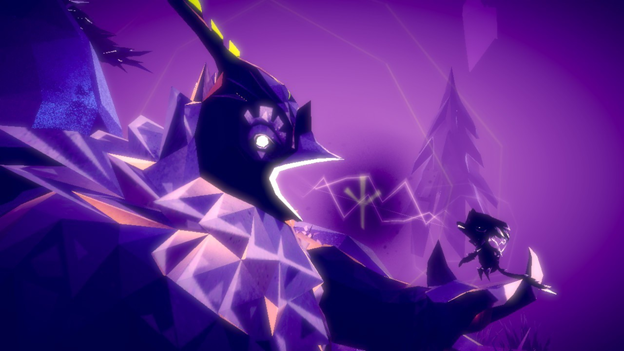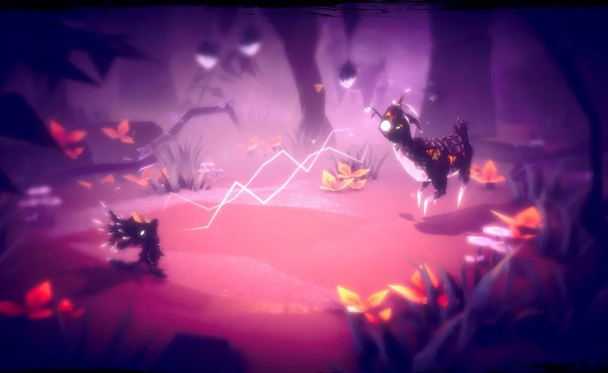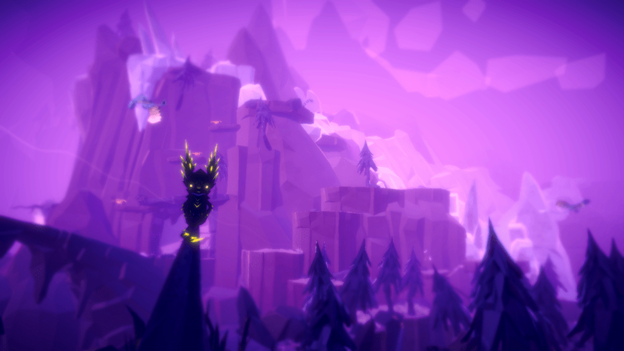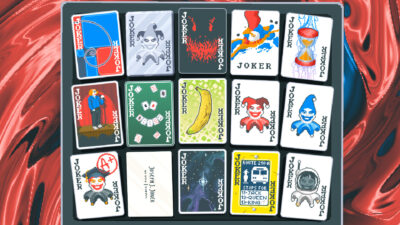This article previously appeared on Crossfader
Hiking through the outdoors can be a polarizing experience. For some, bounding across rocks, leaping over streams, and generally absorbing all that nature has to offer is a thrill. For others, the bugs are irritating, the surrounding woods are scary, and the very thought of taking another step is exhausting. Playing FE, the latest title from Swedish developer Zoink, which also happens to be the first game to be published under Electronic Arts’ new “EA Originals” label, is similar to experiencing these two mindsets at the same time. FE presents a gorgeous landscape that begs to be explored, but the act of doing so is enough to turn away all but the most dedicated players.
FE follows the travails of its titular hero, an adorable fox-like creature, after terrifying entities known as the Silent Ones begin to appear in the forest it lives in. The Silent Ones’ only purpose seems to be the domination over the wildlife within, and as you might guess, this does not sit well with Fe. To combat the new threat, Fe must rescue the rapidly increasing quantity of imprisoned wildlife, and, with the help of its newly liberated allies, drive the Silent Ones out once and for all. Along the way, Fe’s actions imbue it with the powers of the beasts of the forest, providing the miniature vulpine with new abilities and voices to save the forest it calls home.

They say bird is the word
From an aesthetic standpoint, FE has a lot going for it. For starters, the art direction is absolutely breathtaking. A whimsical exploration of nature with somber undertones, FE is reminiscent of games such as ABZU or SHADOW OF THE COLOSSUS that focus on the beauty present in the world and the impact of solitude. Beyond these similarities, though, FE stands out for the unique emphasis that it places on sound and music as the building blocks for the rest of the game. In order to move throughout the world or connect with the animals of the forest, Fe must use one of its six different animal cries. Said cries may result in anything from calling a bird for guidance to awakening a large plant that acts as a trampoline. Such a stress on sound lends great support to the natural atmosphere of the game; the harmony between what is seen and what is heard results in an incredible environment to explore.
Using sound as a tool for solving puzzles is not often an easy beast to tackle, but FE pulls it off with flying colors. Emitting different animals cries from the world to interact with various species of flora and fauna is not only intuitive, it deepens your connection to the greater world around you. When I first discovered that singing to a deer for long enough would allow me to ride on its back, I was ecstatic. The feeling that the forest and life within is an extension of my character bolstered the emotional draw I felt to save the forest, but the extensive use of the cry mechanic eventually came to feel more like a crutch than a theme, leaving me with the desire for something new.

Oh Deer
This is where FE stumbles to a halt. What beauty is established by the audio and visuals is trampled underfoot by the actual exploration and traversal of the world. I’m not sure if unwieldy or unresponsive would be a more apt descriptor for how handling Fe felt, but it was nevertheless more of a chore to solve the puzzles and progress through the world than I had the patience for. Moments pass where Fe will leap from tree to tree with extraordinary grace, requiring no greater feat from the player than pressing the jump button. This facade of agility does not last long, as once control returns to the player, Fe’s movement becomes more akin to maneuvering a bull in a china shop than a nimble woodland creature.
Incidents like this are thanks primarily to Fe’s unusually slow response time. The controls are in no way complicated, but when my actions as a player do not translate into movement within the game quickly enough, skill checks become a nuisance to say the least. Such a flaw could be overlooked if over half of the game was not invested in throwing Fe into precarious scenarios like climbing the side of a mountain or hiding from patrolling enemies, but in this game, any moment where precision is required is closer to a leap of faith than a test of ability.
At times, FE seems to understand which of its attributes attracted players to it in the first place. Whenever possible, it emphasizes the sensory aspects of the game. I will say, there is a distinct rush falling through the air at high speeds, simply to use a cry that awakens a plant underfoot to propel you back to the heavens for more skybound exploration. It was upon realizing that moments such as these were positioned solely to distract from the tedium of wonky puzzles and clunky platforming that this illusion of beauty was rudely shattered.

Pictured: The face I made after realizing I had to climb that mountain with four left feet
I am torn about FE. Truly, it is a magnificent sight to behold, and the focus on sound as a mechanic is music to my ears, but the brief moments of awe and wonder that I felt while flying over, jumping between, and wandering through the forest were consistently overwhelmed by the feeling of irritation and boredom that I felt while trying to find some sort of grasp over the unwelcoming controls and uneven platforming. If you ever have the opportunity to experience this game as a spectator, then I wholeheartedly recommend the experience, but otherwise FE is not worth your time, patience, or money.
Verdict: Do Not Recommend
Reviewed on Xbox One
















Comments